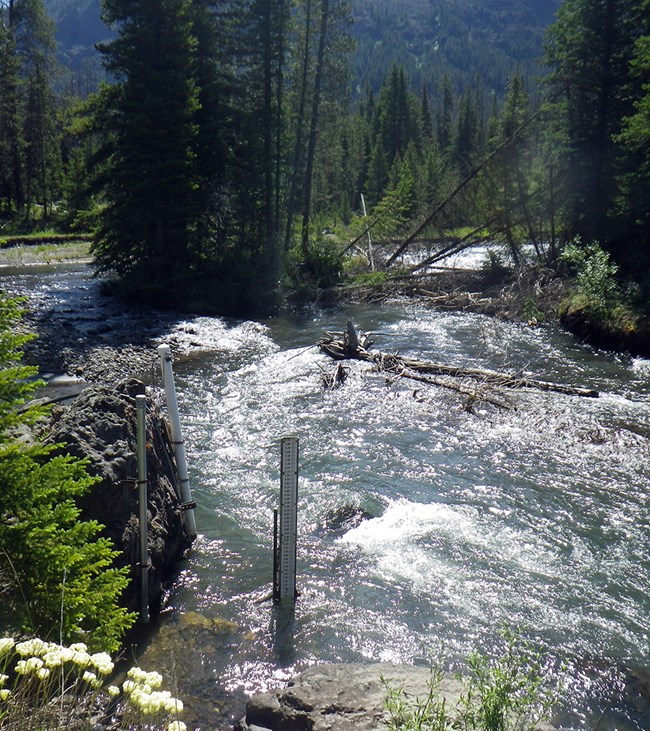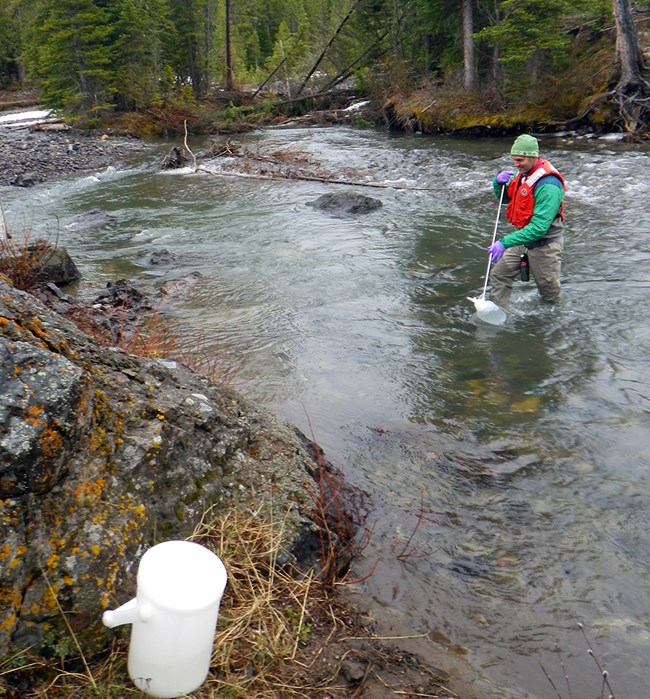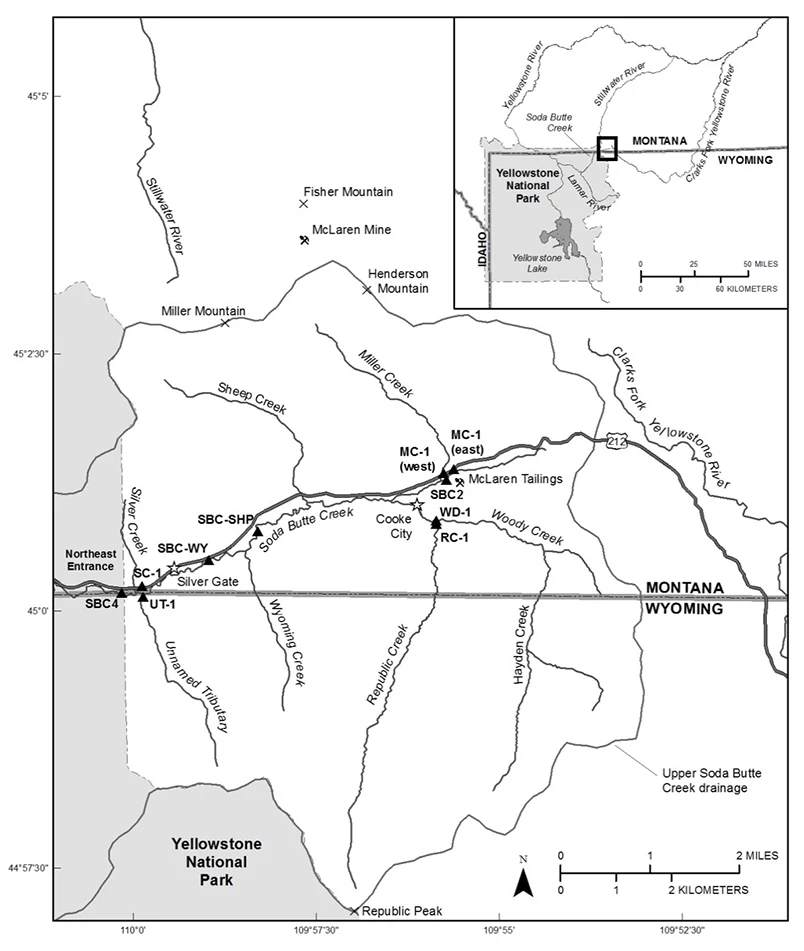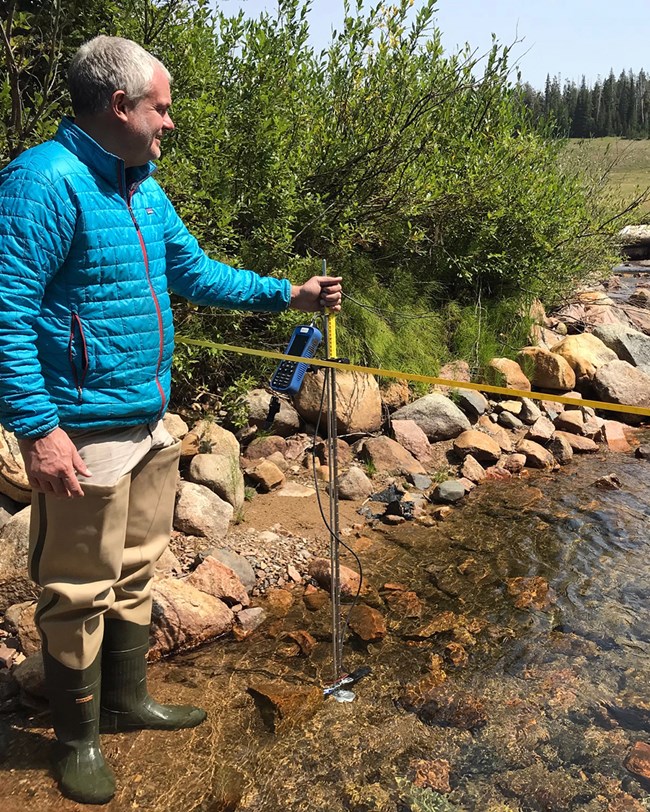Last updated: July 23, 2019
Article
Soda Butte Creek - A Success Story!
Soda Butte Creek is a mountain stream that flows from the Absaroka and Beartooth mountains northeast of Yellowstone National Park to meet the Lamar River in the park. The McLaren Mill and Tailings site near Cooke City, MT, leached metals into Soda Butte Creek for more than 80 years.
Water quality monitoring after an extensive reclamation and restoration project revealed that iron and other metals were effectively eliminated from the upper reaches of Soda Butte Creek. In 2018, Soda Butte Creek was removed from the impaired waters list (Section 303(d) of the Clean Water Act), making this creek the first Montana water body to be delisted after completion of an abandoned mine reclamation!

NPS
History
Mining
More than 150 years ago (before the establishment of Yellowstone National Park), precious metal deposits were discovered in the region around Soda Butte Creek. From the 1870s to the 1950s, tons of gold, silver, lead, zinc, and copper were mined from the area. Although mining in this region has largely been abandoned, it left a legacy of toxic waste and polluted streams. The resulting metal contamination from the abandoned McLaren Mill and Tailings site made Soda Butte Creek the most polluted stream entering Yellowstone National Park.

NPS
The Cleanup
The Montana Department of Environmental Quality completed a reclamation of the former McLaren Mill and Tailings site in 2014. Objectives were to remove an unstable tailings impoundment, relocate contaminated floodplain sediments, improve water quality, and restore the health of the creek. The work spanned five years and cost about $24.5 million. In the end, one-half million tons of mine tailings were removed, 110 million gallons of contamined water were treated, and more than 1,500 feet of the Soda Butte Creek stream channel was restored. Read more about the reclamation project.

NPS

NPS
Monitoring
U.S. Forest Service scientists monitored pre-reclamation water quality from 2000 to 2010. Following the cleanup, scientists from the Greater Yellowstone Inventory and Monitoring Network (National Park Service) and Montana Department of Environmental Quality began monitoring post-reclamation water quality at these same locations and throughout the upper Soda Butte Creek basin. Before and after monitoring of the creek helped scientists evaluate water quality improvements associated with the reclamation of the abandoned mill and tailings site.
Monitoring Objectives
- Compare metal concentrations from a location downstream of the McLaren site before and after the completion of reclamation work.
- Inventory metals throughout the upper Soda Butte Creek drainage to determine basin-wide water quality.

NPS
Water Quality Before the Cleanup
Prior to the reclamation, Soda Butte Creek from Cooke City, MT, to the Montana-Wyoming border near the Yellowstone National Park boundary was determined to be impaired by elevated concentrations of multiple metals. Below the McLaren Mill and Tailings site (SBC2 on the map above), levels of iron, copper, lead, and manganese regularly exceeded the Montana and U.S. EPA's water quality standards. Elevated metal concentrations also contributed to the stream's red appearance near Cooke City, where oxidized iron deposits blanketed the stream bottom (see photos above). At the Yellowstone National Park boundary (SBC4 on the map above), exceedances of these metals were far less common.

NPS
Water Quality After the Cleanup
After reclamation, 11 water quality sampling events in 2015 and 2016 confirmed that copper, lead, and manganese levels in the creek below the former mill and tailings site (SBC2 on the map above) were well below the maximum allowed by state and federal standards. During this period, copper exceeded standards only once. At the Yellowstone National Park boundary (SBC4 on the map above), iron exceeded state standards on two occasions. Iron in Soda Butte Creek is readily traced to Woody Creek and an unnamed tributary near the park boundary, neither of which has any significant mineland disturbances. Iron entering the park in Soda Butte Creek now appears to be principally from natural geological sources. Read more about water quality monitoring results in Park Science.
Delisting!
The reclamation of the McLaren Mill and Tailings site and restoration of Soda Butte Creek represents a milestone in water quality improvement. Additionally, the Montana Department of Environmental Quality used results from collaborative monitoring of Soda Butte Creek to determine that metal levels today largely meet state and federal standards. Soda Butte Creek became the first Montana water body recommended for delisting from the Clean Water Act 303(d) impaired waters list following the successful reclamation of an abandoned mine.
Soda Butte Creek was officially 'delisted' on November 27, 2018. For local residents, the restoration of the ecological health of the creek means the return of recreational and angling opportunities lost through several decades of mine-related impairments. We will conduct follow-up studies related to the successful McLaren Mill and Tailings reclamation project, and water quality monitoring of Soda Butte Creek will continue.
Summary created by the Greater Yellowstone Inventory & Monitoring Network, July 2019
